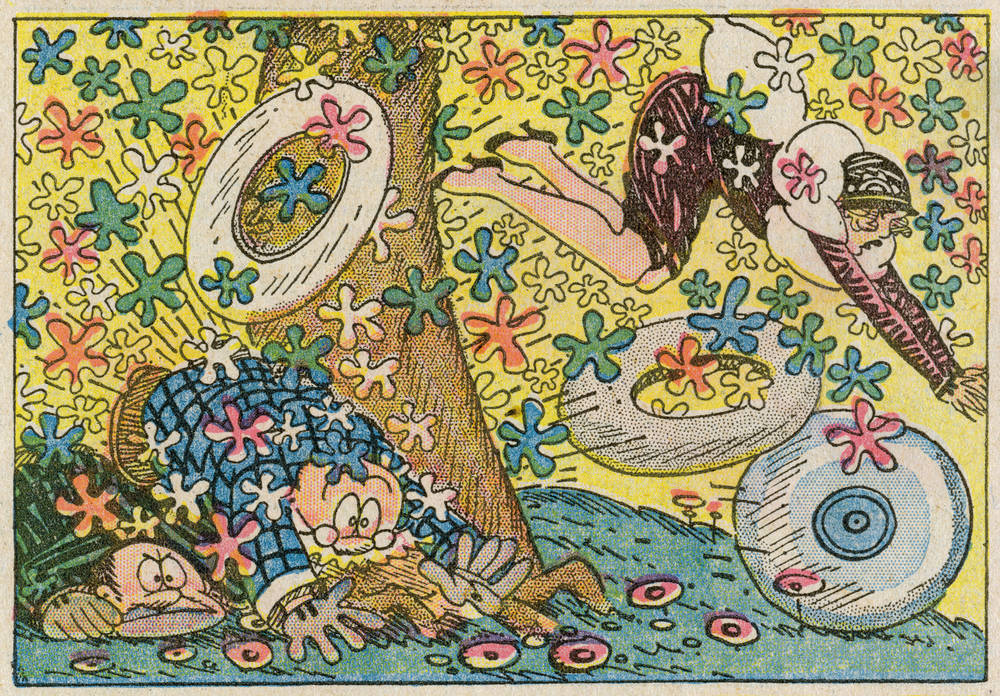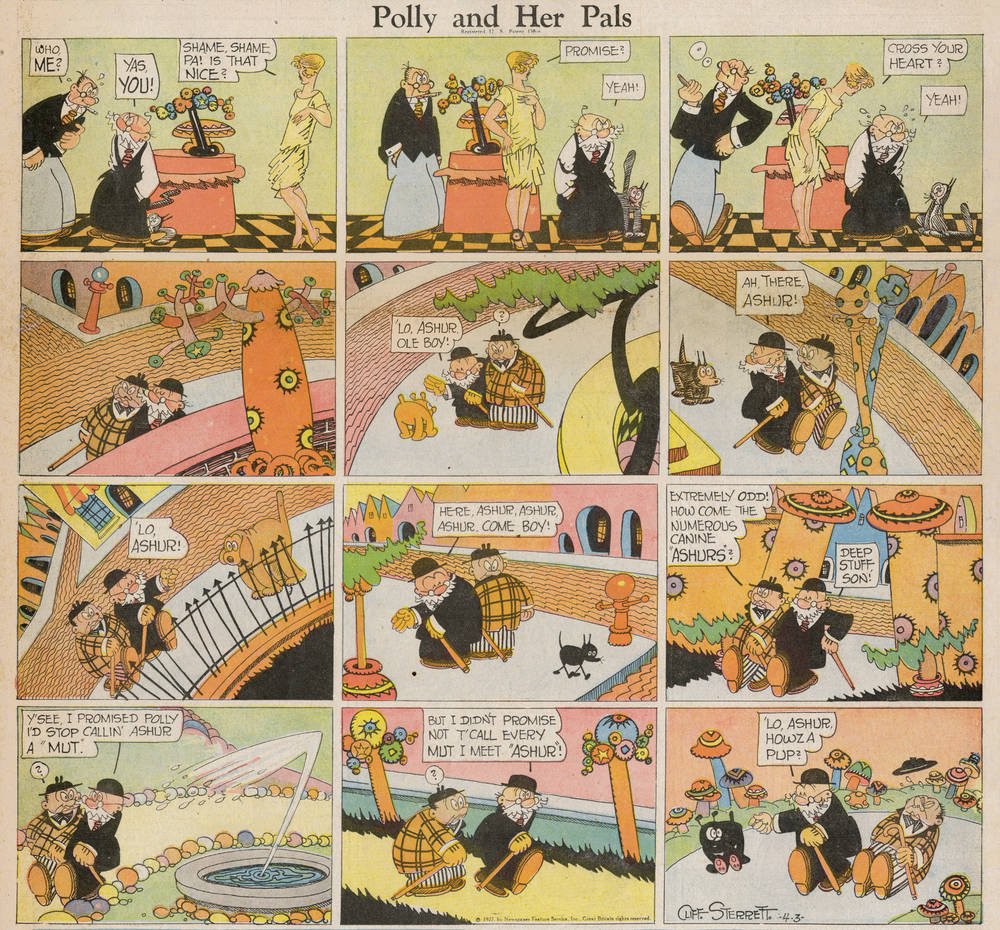Cartoonist Cliff Sterrett sketched the life of the Perkins family for 40 years and became a role model for later generations of cartoonists.
Cliff Sterrett’s humor was conventional; his plots went something like this: Two fishing hooks become entangled and one fisherman pulls the other one first into, then out of the water. His painting style was also entirely within the realm of the familiar – until 1926/27 when his creativity positively exploded.
Sterrett’s primary work “Polly and Her Pals” appeared over a period of 40 years, from 1912 to 1958, as a sort of family sitcom about the middle-class Perkins family. The protagonist Sam, known as Paw, and his wife Susie (Maw), their daughter Polly, cat Kitty, nephew Ashur and a Japanese maid battle with the problems of everyday life and interpersonal conflicts – most significantly with Polly’s continually changing admirers. In terms of content, the character of Polly Sterrett goes well beyond the conventions of the 1910s, since confident young ladies with bobs only became popular female figures during the “Roaring Twenties”.
Design school in New York
Only the basic details of the life of author and illustrator Cliff Sterrett are still known. He was born in 1883 in a small town in Minnesota. His mother died when he was seven, so from then on Cliff was raised primarily by his grandparents. This may explain why the parents in the Perkins cartoon family appear rather like grandparents to Polly in their stature and clothing. At the age of 18, Sterrett began design school in New York and two years later was offered a job as an illustrator at the “New York Herald”. There he initially drew decorative borders or strips and headlines. It was also in New York that he met his wife, whom he married in 1906. A year later his son Paul, his only child, was born.
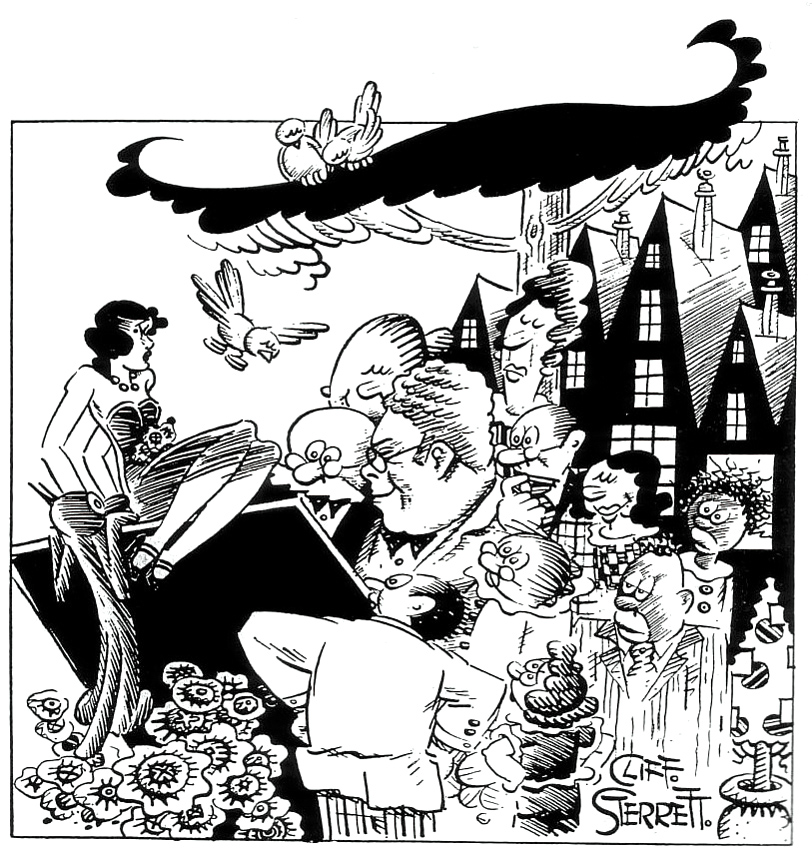
Between 1908 and 1911 Sterrett worked on various newspapers before ending up at the “New York Evening Telegram”. It was here that he was able to work as a cartoonist for the first time and he immediately created four strips that ran simultaneously. They were all centered around family problems or newlyweds. Just one year later, the publisher and media tycoon William Randolph Hearst managed to poach Sterrett. He ended up at Hearst’s “National News Syndicate”, where he concentrated fully on his “Positive Polly” strip, which was soon renamed “Polly and Her Pals”.
40 years of the Perkins family
Sterrett’s daily strip began on December 4, 1912. Just over a year later the series had become so popular that a Sunday page was also introduced. “Polly and Her Pals” was at no point a top seller among cartoons, generating no merchandising products like musicals or dolls, but still the figures had their loyal fans – otherwise the stories about the Perkins family would not have been printed continually for 40 years.
Over the decades, Sterrett’s drawing style changed. The period from 1926/27 to the mid-1930s is his best-known phase, when he developed a modernist-avant-garde style.
Let us look at a few Sunday papers from that period: Whilst Paw doesn’t know what’s happening to him and sees proportions distorted before his very eyes, even without the view through the wrong spectacles the flowers in the vase are already abstracted and presented as an agglomeration of balls. The jetty on which the fishermen sit displays almost amorphous forms and each element bears a different pattern. Another example is the geometric presentation of a window through which the Moon appears: The frequent repetition, unjustified by the narrative, leads one to presume that Sterrett enjoyed drawing crossed lines in front of circles. But how did this change in style come about? Where did his ideas come from?
Cocktail party in the summerhouse
Sterrett barely gave interviews and we know very little about his “inner life”, his artistic sources, role models or ambitions. All we can do therefore is simply piece together clues about his influences considering external circumstances. Through his cartoons, Sterrett was able to afford a pleasant lifestyle. From the mid-1920s the family spent their summer months in the small coastal resort of Ogunquit in Maine (but continued to spend the winter in New York). The coastal resort became a magnet for the art scene and Cliff Sterrett regularly held afternoon cocktail parties at his home. The curator Walt Kuhn also spent time in Ogunquit; he was the main organizer of the legendary “Armory Show” art fair (1913), which represented the first time the European avant-garde had been exhibited in the USA.
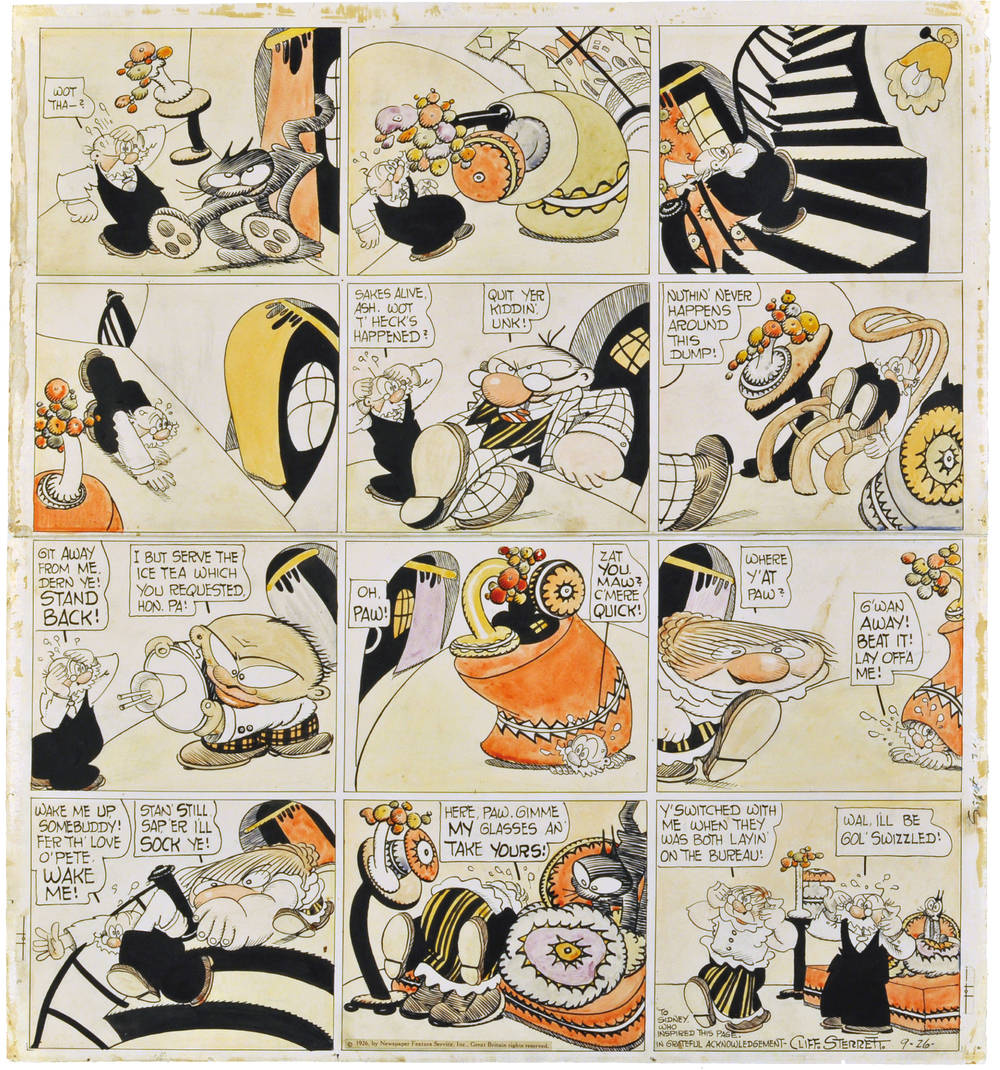
It may have been through these contacts that Sterrett was confronted with artistic styles like Expressionism, Abstraction or the Bauhaus. In addition to this, the 19th-century Japanese color woodcut was very much en vogue at the time. Characteristic features of this include the use of numerous patterns and an exalted body language – and is this not reminiscent of Paw’s bent body as he fishes in his checkered suit?
In order to minimize the burden of his work, from the late 1930s Sterrett had assistants draw his daily strips, whilst he personally drew only the Sunday strips, continuing in spite of arthritis right up to the final “Sunday strip” on June 15, 1958. Cliff Sterrett died in 1964, but his style lived on through his influence on many later generations of cartoonists.
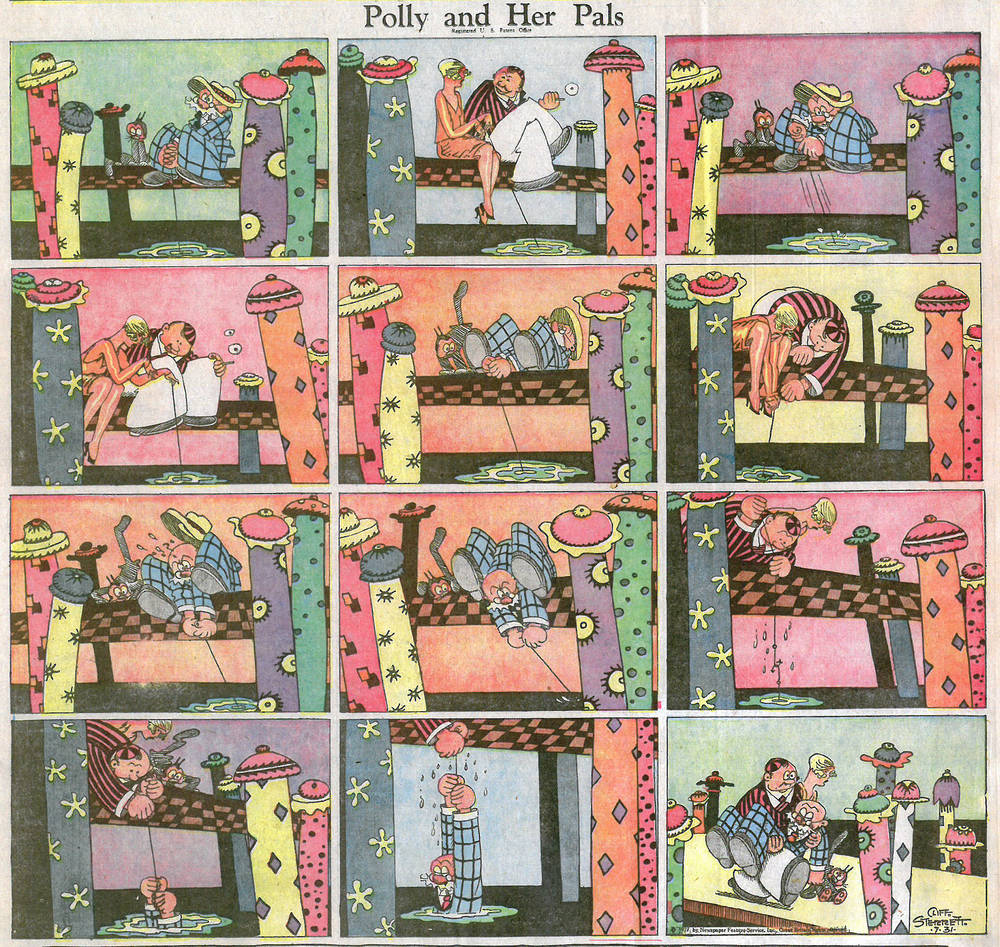

How Hip Hop sings about its dead
Death plays a large part in Hip Hop. The tragic early passing of legends such as Biggie Smalls and Tupac, not to mention rising superstars like...

5 questions for Mary Messhausen and proddy produzentin
With the performance "Thonk piece: Hungry for Stains", drag queens Mary Messhausen and proddy produzentin will open the exhibition COSIMA VON BONIN....

HIP HOP IS BLACK CULTURE – NOT THE OTHER WAY AROUND
Hip hop’s 50th birthday is an occasion for us to listen to some old records and mixed tapes and to look back at the most important hip hop films of...
